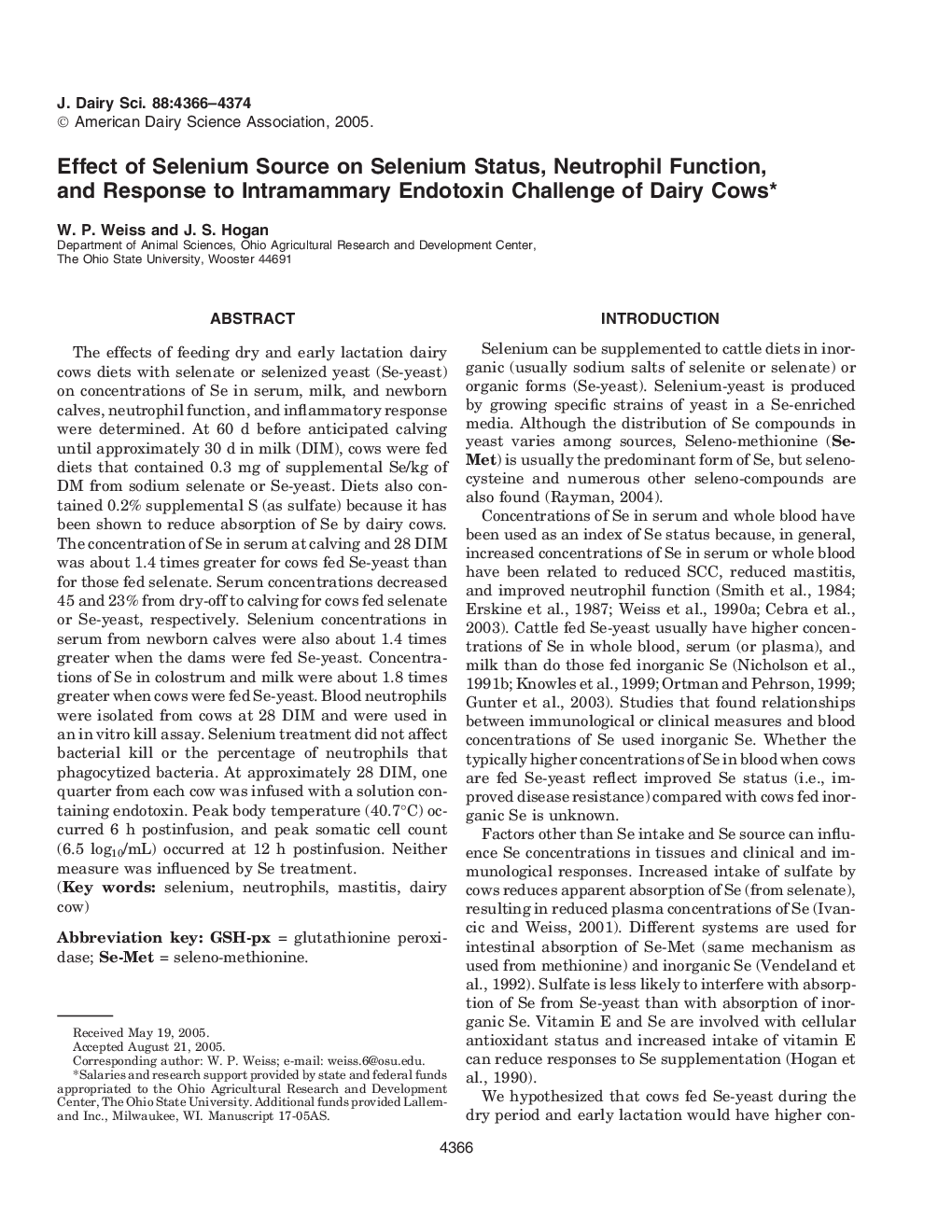| Article ID | Journal | Published Year | Pages | File Type |
|---|---|---|---|---|
| 2441679 | Journal of Dairy Science | 2005 | 9 Pages |
Abstract
The effects of feeding dry and early lactation dairy cows diets with selenate or selenized yeast (Se-yeast) on concentrations of Se in serum, milk, and newborn calves, neutrophil function, and inflammatory response were determined. At 60 d before anticipated calving until approximately 30 d in milk (DIM), cows were fed diets that contained 0.3 mg of supplemental Se/kg of DM from sodium selenate or Se-yeast. Diets also contained 0.2% supplemental S (as sulfate) because it has been shown to reduce absorption of Se by dairy cows. The concentration of Se in serum at calving and 28 DIM was about 1.4 times greater for cows fed Se-yeast than for those fed selenate. Serum concentrations decreased 45 and 23% from dry-off to calving for cows fed selenate or Se-yeast, respectively. Selenium concentrations in serum from newborn calves were also about 1.4 times greater when the dams were fed Se-yeast. Concentrations of Se in colostrum and milk were about 1.8 times greater when cows were fed Se-yeast. Blood neutrophils were isolated from cows at 28 DIM and were used in an in vitro kill assay. Selenium treatment did not affect bacterial kill or the percentage of neutrophils that phagocytized bacteria. At approximately 28 DIM, one quarter from each cow was infused with a solution containing endotoxin. Peak body temperature (40.7°C) occurred 6 h postinfusion, and peak somatic cell count (6.5 log10/mL) occurred at 12 h postinfusion. Neither measure was influenced by Se treatment.
Related Topics
Life Sciences
Agricultural and Biological Sciences
Animal Science and Zoology
Authors
W.P. Weiss, J.S. Hogan,
